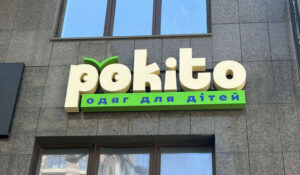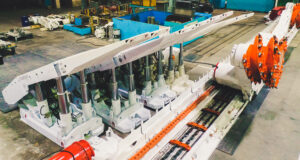
Foreign Ministers of Uzbekistan, Afghanistan and Pakistan Bakhtiyor Saidov, Amir Khan Muttaki and Ishaq Dar signed a trilateral framework agreement on the development of a feasibility study for the Trans-Afghanistan Railway project during a meeting in Kabul on Thursday.
“We have signed a trilateral framework agreement on the development of a feasibility study for the Trans-Afghanistan-Pakistan Railway project, which is of strategic importance for the whole of Eurasia,” the Uzbek Foreign Minister said in his telegram channel.
He noted that this transportation corridor will improve trade, support Afghanistan’s economic recovery, and open new routes to world markets through southern ports.
According to Saidov, during the meeting, the Uzbek side reaffirmed its commitment to strengthening trade ties, expanding cooperation in agriculture, pharmaceuticals, textiles and construction, as well as increasing the capacity of the Termez International Trade Center (opened in Uzbekistan near the Afghan border).
As reported, in February 2021, representatives of Uzbekistan, Afghanistan, and Pakistan signed a joint action plan for the construction of the Mazar-e-Sharif-Kabul-Peshawar railway with a length of 573 kilometers and a transit potential of up to 20 million tons of cargo per year following talks in Tashkent.
The World Bank, the Asian Development Bank, the European Bank for Reconstruction and Development, the European Investment Bank, the Islamic Development Bank, the Asian Infrastructure Investment Bank, and the U.S. International Development Finance Corporation (DFC) have expressed interest in financing the project.
In April 2024, during Uzbek President Shavkat Mirziyoyev’s visit to Moscow, a preliminary agreement was reached on Russia’s participation in the project. The volume of Russian cargo transportation along the projected route can be estimated at 8-15 million tons annually.
According to the Ministry of Transport of Uzbekistan, the construction of the Trans-Afghan railway line will take at least 5 years, with a preliminary cost of $4.8 billion.
AFGHANISTAN, CONSTRUCTION, PAKISTAN, Trans-Afghan railroad, UZBEKISTAN

A children’s store of eco-brands Pokito, with a focus on ages 1 to 10, will open in Ocean Mall, the company’s press service reports.
“Pokito started its operations in 2023 with a clear mission: to offer Ukrainian parents high-quality, environmentally friendly and aesthetically pleasing clothes for children under 10 years old. We offer solutions that meet the daily challenges of an active childhood: comfort, practicality, durability, safe materials and modern design,” said Pokito founder Iryna Zueva.
The assortment of the 80-square-meter store, which will be located on the entertainment floor of Ocean Mall, will include proven European and domestic brands that have proven themselves to be responsible in production, high quality standards and child care. The presented children’s clothing, footwear and related products are united by one idea – practicality, quality and care for the child’s comfort. The store’s portfolio currently includes 15 brands. Among the bestsellers are Spanish Boboli and Cóndor, Danish Liewood and Konges Sløjd, British Mimi & Lula, etc.
The main requirements for manufacturers are a proven reputation for high quality materials, responsible production and environmental standards, safe composition and certificates confirming this. Ukrainian brands already represented include Ukrglamour – embroidered shirts (Lutsk), Elf-Kids – hats (Odesa).
“We want the item to be worn, not to lose its appearance after two or three wash cycles, and to make parents happy that they made the right choice by choosing Pokito products. This creates trust and ensures that our customers will come back to us again,” Zueva said.
As for foreign brands, she emphasized that they choose those that have already gained favor abroad due to their properties, but have not yet gained popularity in the Ukrainian market, which makes it possible to make a unique shopping offer to domestic customers.
Ocean Mall is a retail resort format shopping center. The total area is 300 thousand square meters, with a parking lot for 4 thousand cars. The mall will combine 800 shops and 50 restaurants. Among the largest tenants are Silpo grocery supermarket, flagship stores of the world’s largest retailers in the segments of fashion, sports, and home furnishings. More than 30 thousand square meters in Ocean Mall are dedicated to entertainment, including the Galaxy amusement park for the whole family and a seven-screen multiplex cinema.

DTEK Energy’s machine builders have overhauled the EL160LS roadheader for the first time and handed it over to DTEK Shakhtoupravlenie Dniprovske, reports Corum Group.
“This is a new type of equipment for us, so the project was a real challenge. However, everything was completed on time and in accordance with the technical requirements,” the company said on its Facebook page.
According to the report, the machine received new explosion-proof electrical equipment of its own design, certified according to Ukrainian standards.
The machine has a 300-liter bucket and a 55 kW engine. It weighs 9.5 tons, has a boom swing of ±30°, and operates on slopes of up to 22°.
According to open source information, the EL160LS soil scraper is manufactured by the German company Hazemag. It is designed to level the soil of a mine workings, as well as to load loosened rock mass onto a belt or scraper conveyor.
Corum Group is a leading manufacturer of mining equipment in Ukraine and a part of DTEK Energy, an operating company responsible for coal mining and electricity generation within Rinat Akhmetov’s DTEK energy holding. DTEK Energy’s machine-building assets include Druzhkovka Machine-Building Plant (relocated to Dnipro), Kharkiv-based Svet Shakhtyora Plant and Pershotravensk Machine-Building Plant.

On July 11, 2025, a forum organized by MC-Bauchemie was held in Kyiv.
It brought together experts in the production, design, testing, and certification of concrete and reinforced concrete products, as well as representatives of other interested organizations: large contractors, manufacturers of cement, crushed stone, laboratory equipment; consulting companies, and even the German-Ukrainian Chamber of Commerce and Industry.
The program was packed, and the discussions were focused and insightful, revolving around the adaptation of European standards, the durability of structures, and the introduction of the latest technologies in Ukraine. The event was opened by Artem Pryimachenko, Director of the Ukrainian branch of MC-Bauchemie, who emphasized the importance of synchronizing Ukrainian standards with European norms—not only as a step towards harmonization, but also as a tool for improving the quality and durability of infrastructure facilities.
One of the key topics of the forum was the conformity assessment of concrete products in accordance with the Law of Ukraine “On the Provision of Construction Products on the Market,” which implements the provisions of European Regulation 305 and lays the foundation for the free movement of construction products on the market. Lyudmila Kripka, Executive Director of the Ukrcement Association, spoke on this topic. In her presentation, she shared the cement industry’s experience in implementing EN standards and preparing manufacturer’s declarations. Lyudmila outlined in detail the challenges faced by Ukrainian manufacturers in adapting to the requirements of the Regulation, in particular regarding labeling, conformity assessment, and the implementation of a system for assessing the technical characteristics of products.
Lyudmila Kripka paid special attention to the targeted use of different classes of cement according to EN in road construction, namely the introduction of roller-compacted concrete (RCC) technology in Ukraine.
During the forum, participants had the opportunity to delve into technical aspects:
All these issues are critical in post-war reconstruction, where reliability, durability, and compliance with modern requirements are paramount.
The final chord was a panel discussion that brought together leading industry experts. They discussed pressing issues facing concrete product manufacturers, including:
During the discussion, it was repeatedly stated that the reconstruction of Ukraine is not only a question of materials, but also of a systematic approach to standardization, conformity assessment, and technical support.
The forum clearly demonstrated that the Ukrainian industry is ready for change, but needs support in terms of standardization, training, and systematic interaction with government agencies.
MC-Forum 2025 was yet another confirmation that Ukraine’s cement and concrete industry is not only flexible to innovation but also active in European integration processes. Thanks to players such as the Ukrcement Association, MC-Bauchemie, and specialists with technical backgrounds, the sectoral transition to European standards is taking place systematically, with an understanding of all the technical nuances.

The Verkhovna Rada, at the suggestion of newly appointed Prime Minister Yulia Svyrydenko, approved the new lineup of the Cabinet of Ministers of Ukraine.
The appointment of government members was voted on at a plenary session on Thursday, which was held as a package (except for the Minister of Defense and the Minister of Foreign Affairs, whose candidates are nominated by the president), with 253 MPs voting in favor.
The online broadcast of the Ukrainian parliament session on YouTube is being conducted by MP Yaroslav Zheleznyak (Voice faction).
In particular, Mykhailo Fedorov was promoted to First Deputy Prime Minister of Ukraine – Minister of Digital Transformation (previously Deputy Prime Minister for Innovation, Education, Science and Technology – Minister of Digital Transformation).
The new Deputy Prime Minister for European and Euro-Atlantic Integration is former Deputy Minister of Economy and Trade Representative of Ukraine Taras Kachka.
The head of the large combined Ministry of Economy, Environment, and Agriculture is now Oleksiy Sobolev, former first deputy minister of economy of Ukraine (previously, the position of minister of economy was held by Svyrydenko, minister of environmental protection by Svitlana Grynychuk, and minister of agrarian policy by Vitaliy Koval). – Vitaliy Koval).
Another new official is former First Deputy Minister of Finance Denys Ulyutin, who heads the merged Ministry of Social Policy, Family, and Unity of Ukraine (previously, the position of Minister of Social Policy was held by Oksana Zholnovich, and Minister of National Unity – Oleksiy Chernyshov).
There are also several officials who remained in the new Cabinet but in new positions, including Herman Galushchenko, who became Minister of Justice (previously Minister of Energy), and Svitlana Grinchuk, who became Minister of Energy (previously Minister of Environmental Protection and Natural Resources).
In addition, Deputy Prime Minister for Recovery, Minister of Community and Territorial Development Oleksiy Kuleba, Minister of Youth and Sports Matviy Bedny, Minister for Veterans Affairs Nataliya Kalmykova, Minister of Internal Affairs Ihor Klymenko, Minister of Education and Science Oksen Lisovyi, Minister of Health Viktor Lyashko, and Minister of Finance Serhiy Marchenko retained their positions from the previous government.
In addition, on Thursday, Denys Shmyhal is to be appointed Minister of Defense, who will also oversee strategic industries (he previously held the post of Prime Minister), and Andriy Sybiga is to be reappointed Minister of Foreign Affairs.
At the same time, the Rada did not appoint a new Minister of Culture today because, as previously stated by the head of the ruling Servant of the People faction, Davyd Arakhamia, consultations on candidates are still ongoing.
Thus, the following positions in the new government were not filled: former Deputy Prime Minister for European and Euro-Atlantic Integration of Ukraine – Minister of Justice of Ukraine Olha Stefanishyna (the president appointed her as the special representative of the president of Ukraine for the development of cooperation with the US, while her candidacy for the post of ambassador to the US is being agreed upon) former Deputy Prime Minister – Minister of National Unity of Ukraine Oleksiy Chernyshov, former Minister of the Cabinet of Ministers Oleg Nemchinov, former Minister of Social Policy Oksana Zholnovich, former Minister of Agrarian Policy and Food Vitaliy Koval (may return to the post of head of the State Property Fund of Ukraine), former Minister of Culture and Strategic Communications Mykola Tochitsky (may become Ukraine’s permanent representative to the Council of Europe), former Minister of Strategic Industries German Smetanin (will head Ukroboronprom) and former Minister of Defense of
Ukraine Rustem Umerov (is being considered for appointment as Secretary of the National Security and Defense Council).